23-08-2024
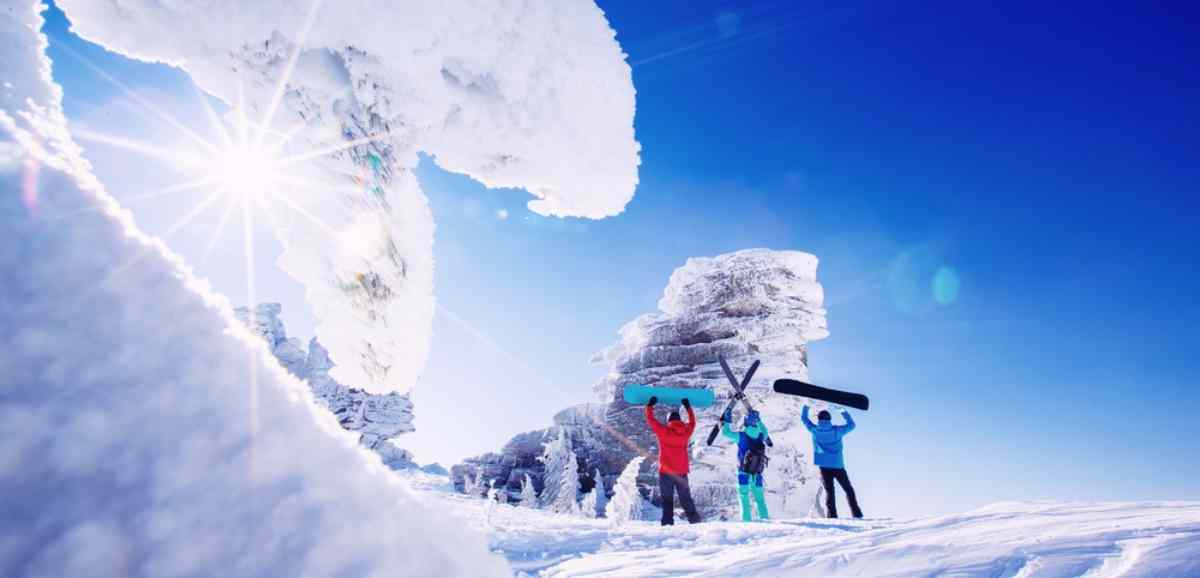
When you think of Iceland, you might picture glaciers and geysers, but have you ever thought about skiing in Iceland? It's something special, trust us. Imagine skiing down slopes with the ocean on one side and mountains on the other. This blog is all about what makes skiing here so unique.
What makes Iceland stand out? It's the variety. We've got cozy resorts where you can relax and wild backcountry trails if you're up for an adventure. Whether you're looking for a thrill or just a peaceful day in the snow, Iceland has something for everyone. Want to know more about why skiing in Iceland is so special? Let's take a closer look.
You can ski in Iceland during the Icelandic winter months of November to May, so you've got a good chunk of the year to ski. But if you're wondering when the best time is, go for March and April. During this time, the snow conditions are at their best, with more settled weather and longer days, perfect for skiing and snowboarding.
Some people like to ski from December to February, but those months can be cold and short days, which might limit your skiing time. February is known for its great powdery conditions, but as the Icelandic spring approaches in March and April, the weather gets milder and more stable and, overall, better skiing.
If you're considering a trip, planning for late March or early April would give you the best chance to enjoy both skiing and the stunning landscapes of Iceland.

Skiing in Iceland offers a unique experience shaped by the country's cool, temperate maritime climate. Iceland's weather is a mix of cool summers and mild yet wet and windy winters. In Reykjavik, winter temperatures typically hover around 0-5°C (32-41°F), while in the northern town of Akureyri, it's a bit cooler, with highs around -3-3°C (27-37°F).
The Westfjords, influenced by the East Greenland Current, are the coldest at sea level, making it the region with the most consistent snow cover. Snow begins to build up in October and usually sticks around until April, though in some years, the peaks can stay snow-covered all year round. Rainfall is a constant companion throughout the year, with 25–50 mm (1–2 inches) per month and most days seeing some precipitation.
There are around 20 ski resorts in Iceland. So, which one should you go to, you might wonder. To make your life easier and your decision-making faster, we went the extra mile to pick out the most remarkable ones. Plus, what's better than having a local's opinion? Here are our recommendations for the best ski resorts in Iceland:
Bláfjöll Ski Resort is a favorite spot for Reykjavik skiing. Just 30 kilometers (19 miles) from the city, it's the largest ski area in Iceland. Located in the Blue Mountains, it's easy to reach and offers stunning views.
The resort has 15 kilometers (9 miles) of slopes, mainly for beginners and intermediate skiers. The wide, open runs make skiing here comfortable, with plenty of space and clear visibility. The highest point is 700 meters (2,297 feet) above sea level, with a vertical drop of 240 meters (787 feet). The longest run is about 2.5 kilometers (1.55 miles).
Bláfjöll has 14 ski lifts, so you won't spend much time waiting. One of the best things here is night skiing during the week, where you can ski under the Icelandic sky. The views of the volcanic landscape and the ocean make Bláfjöll a special place for skiing around Reykjavik.
View this post on Instagram
Hlíðarfjall Ski Resort is located just 6 kilometers (about 4 miles) west of Akureyri and offers some of the best skiing in Iceland. It's the second-largest ski area in the country, with an elevation of 1,200 meters (3,937 feet) and a top skiing point at 1,014 meters (3,327 feet).
The resort has eight ski lifts, including two quad chairlifts, that take you to 24 ski runs covering nearly 15 kilometers (9 miles). Hlíðarfjall is great for all levels of skiers. At the base, called Skíðastaðir, you'll find a ticket office, ski rental, parking, and a café. There's also a mid-mountain hut, Strýtan, where you can take a break and grab a bite.
A highlight of Hlíðarfjall is night skiing, with many slopes lit up by floodlights so you can ski into the evening. In summer, the resort offers mountain biking trails. With its good facilities, varied runs, and views of Eyjafjörður, Hlíðarfjall is a must-visit for skiing in Iceland.
View this post on Instagram
Dalvik Ski Resort, located on the stunning Troll Peninsula in Northeast Iceland, offers a unique skiing experience just 35 minutes from Akureyri. Nestled on Boggvisstadafjall, the resort reaches up to 600 meters in altitude and features around 5 kilometers (3 miles) of groomed slopes. With two lifts and a 1,200-meter (0.8-mile) floodlit run, Dalvik even offers night skiing, adding a magical touch to your visit.
What really sets skiing in Dalvik apart is its focus on backcountry skiing. For those seeking adventure, the surrounding mountains provide access to some of the best off-piste terrain in Iceland. You can explore ski touring or even try heliskiing, with descents of up to 1,200 meters (3,937 feet) possible. This makes Dalvik a top choice for those looking for more than just groomed runs.
The resort also has ski rentals and a snow production system to keep the conditions just right. And if you want to go cross-country skiing in Iceland, you'll find tracks nearby when the weather cooperates. With breathtaking views of the Eyjafjörður fjord, Dalvik Ski Resort is a must-visit for winter sports enthusiasts.
View this post on Instagram
Ísafjörður Ski Resort in the Westfjords of Iceland is a standout among Iceland's ski resorts. It's located in the Tungudalur valley and offers about 9 kilometers (5.5 miles) of slopes with three ski lifts.
The elevation ranges from 115 to 487 meters (377 to 1,598 feet), and one of the longest runs is 1,200 meters (3,937 feet). The resort provides the basics, like equipment rentals and snow machines, to maintain good skiing conditions. Night skiing is also available with floodlights on the slopes. The resort is also known for backcountry skiing, especially in the nearby Seljalandsdalur valley.
There, you can find runs between 2 and 10 kilometers (1.2 to 6.2 miles) long, ideal for those seeking adventure. The views of the fjords and mountains make Ísafjörður Ski Resort a great place to explore Iceland's natural beauty.
View this post on Instagram
Skálafell Ski Resort is just 35 minutes from Reykjavik, making it an easy spot for skiing in Reykjavik, Iceland. The resort has about 7 kilometers (4.3 miles) of slopes, which work well for both beginners and more seasoned skiers.
With elevations ranging from 380 to 700 meters (1,247 to 2,297 feet), there's a good mix of runs to enjoy. There are four chairlifts, so you won't spend much time waiting to hit the slopes. The longest run is 2 kilometers (1.2 miles), and there's also a snowboard park with jumps and rails.
After a day on the slopes, you can kick back at the lodge with some refreshments. Skálafell is also a place to visit in the summer when it turns into a mountain biking park. It's a great spot for outdoor fun all year round. If you're in Reykjavik and want to ski, Skálafell is worth checking out.
View this post on Instagram
You've had a great time on the slopes at some of Iceland's best ski resorts, so what's next? If you're up for more adventure, backcountry skiing and heliskiing are exciting options.
Backcountry skiing is about leaving the regular trails behind and exploring untouched mountain areas. It's a bit more challenging and requires special gear and safety knowledge. Many people go with a guide to stay safe.
Heliskiing takes things to another level. A helicopter drops you at the top of a mountain, and you ski down fresh, untouched snow. This isn't for beginners—you need to be experienced and ready for a thrill. Iceland's amazing scenery and tough terrain make it perfect for heliskiing.
Iceland's backcountry skiing season usually runs from late February through June, with the best conditions often in the spring. Thanks to Iceland's coastal location and mild temperatures, the snow stays stable, and you can enjoy great skiing well into the summer.
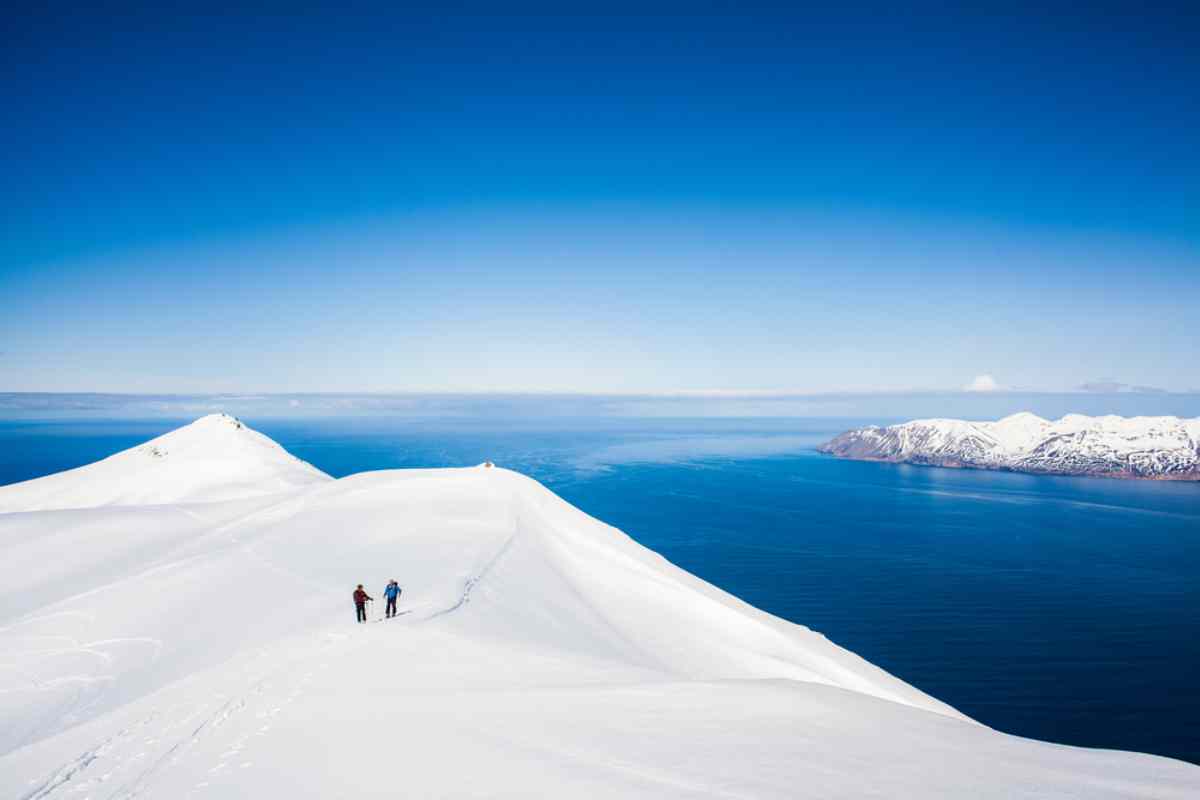
The Troll Peninsula is a top spot for heliskiing in Iceland. The scenery is amazing, and the drops can go up to 1,500 meters (4,921 feet). Here are a couple of options for tours:
The season for heliskiing runs from late February to June, with great snow and stunning views.
It is crucially important to understand the skiing conditions in Iceland before planning your trip. Here are some things to consider:
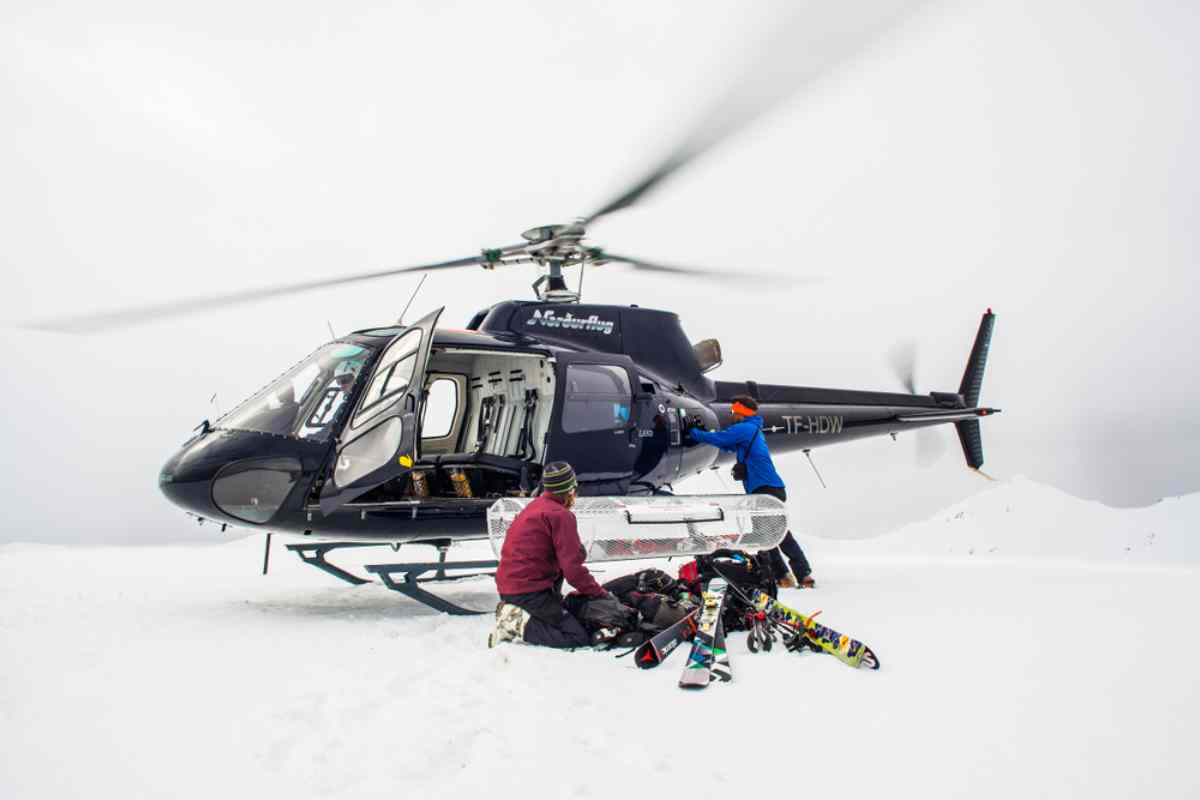
Iceland has some really unique skiing conditions. Here's a quick look at what to expect:
Skiing in Iceland is awesome, but it's important to stay safe. Here are some tips:
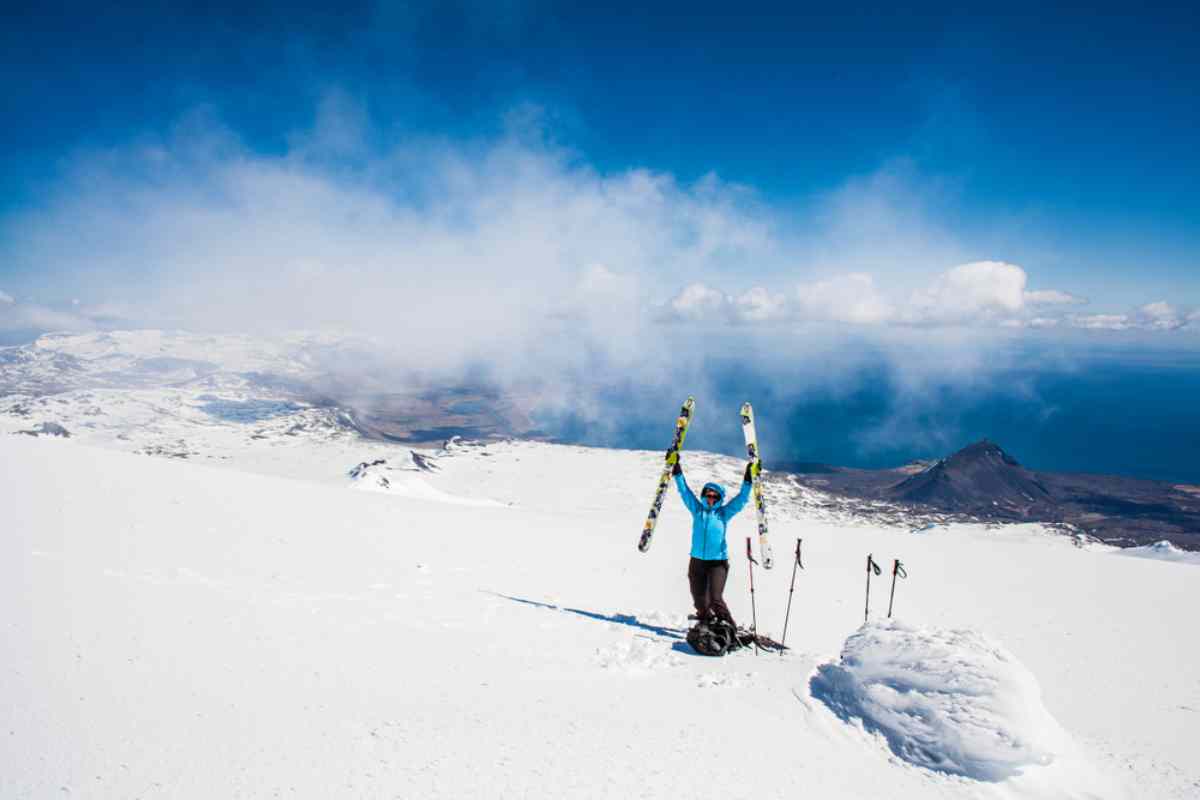
Iceland hosts a variety of skiing events and festivals throughout the winter and spring seasons, making it a vibrant hub for skiing enthusiasts. So, if you're planning a trip to Iceland, make sure to check out these exciting events:
AK Extreme is Iceland's biggest snowboarding and music festival, held every year in Akureyri, the capital of North Iceland. It usually runs for three to four days in early April, drawing in snowboarders from all over. The festival's main event is the Big Jump contest, where athletes perform impressive tricks in front of cheering crowds.
But AK Extreme isn't just about snowboarding. There's also live music, adding to the festive vibe and celebrating both winter sports and Icelandic culture. The events take place at Mt. Hlíðarfjall and in downtown Akureyri, so you get to enjoy the excitement while exploring the town.
This festival plays a big role in promoting winter sports in Iceland, especially among young athletes. It also helps boost local tourism by bringing visitors to Akureyri and showcasing the area's natural beauty and winter activities. AK Extreme is a highlight on Iceland's calendar, combining snowboarding, music, and Icelandic culture in one fun event.
View this post on Instagram
Iceland is home to some amazing skiing events that bring people together and celebrate winter sports. Here are a few key ones:
By now, you're probably itching to pack your bags and head to Iceland for some great skiing! Here are some tips to help you plan your trip:
Renting gear is easy at the major ski resorts like Bláfjöll, Hlíðarfjall, and Skálafell. They have on-site rental shops where you can get everything you need—skis, snowboards, boots, and more. Bergmenn Mountain Guides and Glacier Ski Shop are also good options for renting specialized gear. It's smart to book your equipment in advance, especially during busy times.
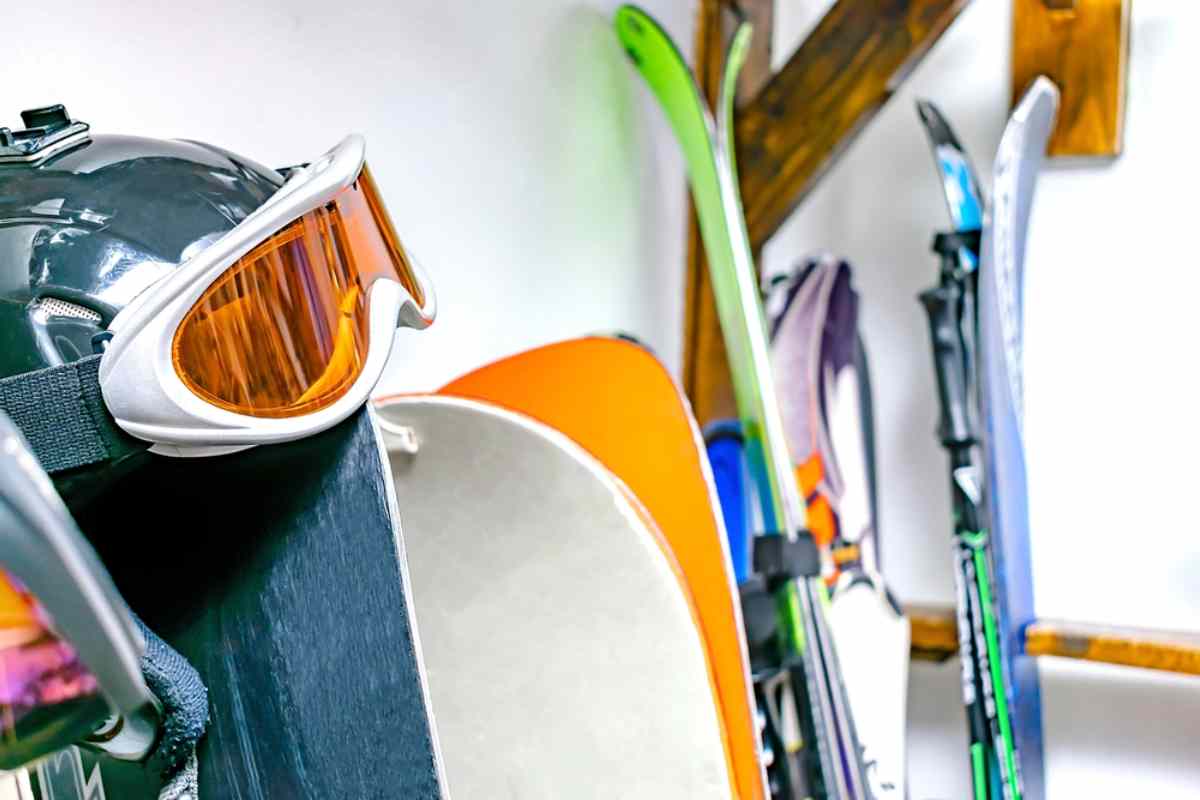
The cost of lift passes varies depending on the resort. For example, at Bláfjöll Ski Resort, a day ticket costs around ISK 5,940 (€40) during the main season.
Hlíðarfjall is slightly more expensive, with a day ticket priced at about ISK 6,960 (€45). Prices can differ based on the resort's facilities and the time of year, so it's always a good idea to check the resort's website or contact them directly for the latest information.
When it comes to finding a place to stay near Iceland's ski resorts, you've got lots of options. Many resorts offer lodging right on-site, like chalets or guesthouses, so you can stay close to the slopes.
If you want more choices, nearby towns like Reykjavík have plenty of hotels, guesthouses, and Airbnb rentals. These places are great bases for your skiing trips and give you more flexibility.
Getting to Iceland's ski resorts is pretty easy. You can drive or take public transport, but renting a car in Iceland gives you more freedom to explore at your own pace. Just be cautious of icy roads in winter, and consider a 4x4 for extra safety. If you prefer not to drive, joining a tour that includes transportation to the resorts is another good option.
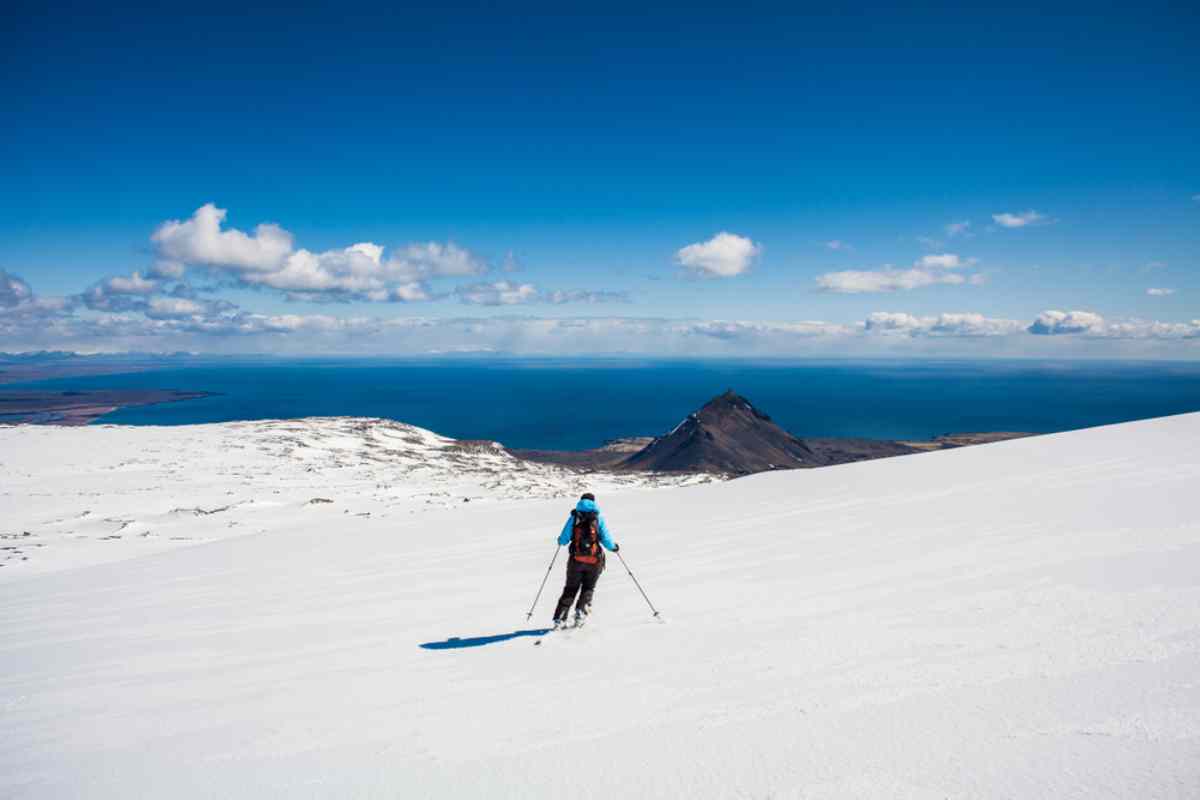
While skiing takes center stage in Iceland during the winter months, the country offers an array of other thrilling winter activities to enhance your visit.
Snowboarding in Iceland is a big thing; people come from all over the world to do it. The country has some great ski resorts like Bláfjöll, Hlíðarfjall and Dalvík, each with something for all levels of snowboarders.
Bláfjöll, near Reykjavik, is a popular one because of its many runs and good snow. Locals and visitors love it. Hlíðarfjall, near Akureyri, is another top spot. It has everything you need for a great day on the mountain, including a ski school and night skiing under the lights.
If you're a backcountry snowboarder, the Troll Peninsula is the place to be. It's got powder snow and diverse terrain, perfect for advanced riders.

Iceland is an amazing place for ice climbing, with some of the most beautiful glaciers in the world. Sólheimajökull and Vatnajökull, Europe's largest glacier, are two of the best spots for this adventure.
Whether you're new to ice climbing or have been doing it for years, there are guided tours that can match your skill level. These tours provide everything you need, from gear to expert advice, making sure your experience is both safe and thrilling.
Combining skiing with the Northern Lights is a magical experience. The best time to catch these auroras is between late September and early April. To give yourself the best chance of seeing this natural wonder, it's a good idea to check the aurora forecast and pick spots with little light pollution.
Resorts like Hlíðarfjall and Bláfjöll are great choices because they offer easy access to dark skies, making them perfect for Northern Lights viewing after a day on the slopes.
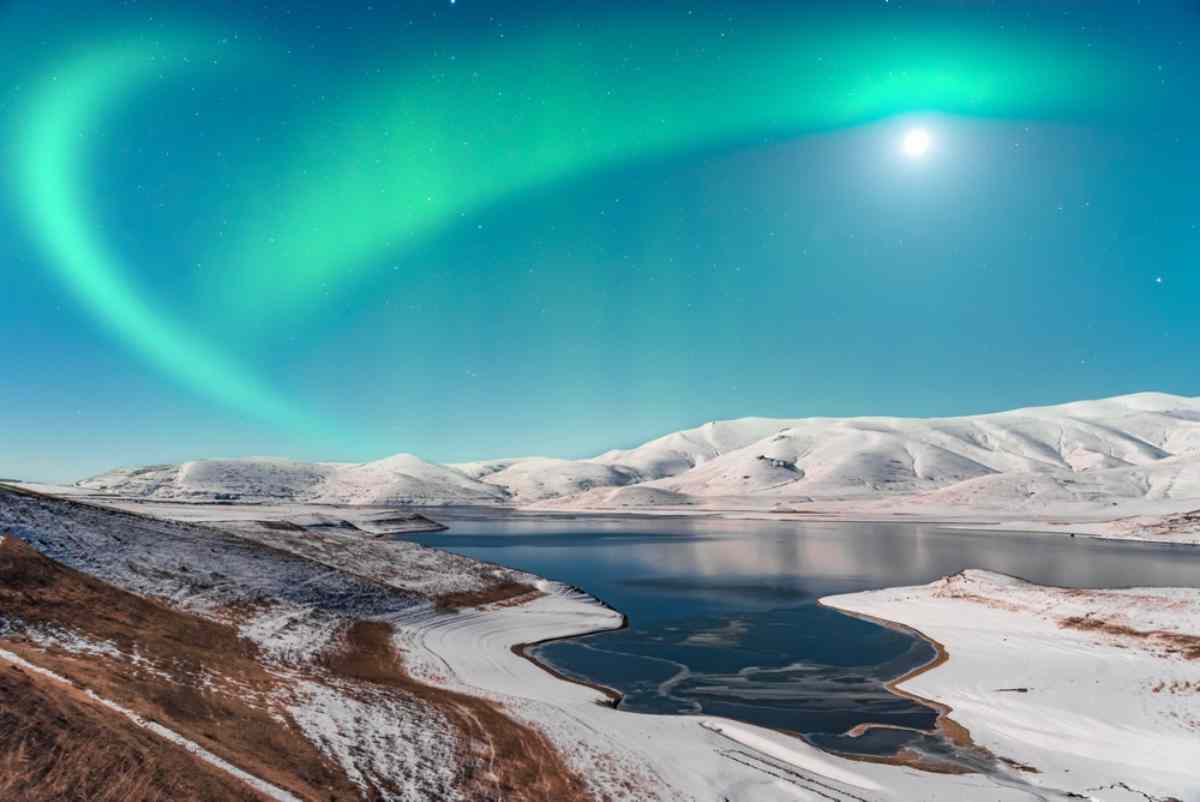
After a day of skiing or snowboarding, there's nothing better than relaxing in one of Iceland's famous hot springs. Many ski areas are close to geothermal hot springs, giving you the perfect chance to unwind in a unique way.
The Blue Lagoon, near Reykjavik, is one of the most well-known spots, offering a luxurious soak in mineral-rich waters. If you're looking for something quieter, the Mývatn Nature Baths in North Iceland offer beautiful views and a peaceful atmosphere.
Another great option is the Reykjadalur Hot Springs, near Bláfjöll. After a scenic hike, you can soak in natural hot springs while taking in the surrounding beauty.
Skiing in Iceland is more than just about skiing. Whether you're carving up the slopes at Bláfjöll near Reykjavik, tackling the trails at Hlíðarfjall in Akureyri, or seeking adventure in the backcountry of the Troll Peninsula, Iceland has something for every level of skier. The landscapes are breathtaking, and every run is unique.
But the fun doesn't stop when you leave the mountain. After a day of skiing, you can soak in one of Iceland's geothermal hot springs, which are surrounded by nature. And if you're lucky, you might even see the Northern Lights. So why not add Iceland to your list of must-visit ski destinations? With its stunning scenery and abundance of winter activities, it's a trip you won't soon forget.